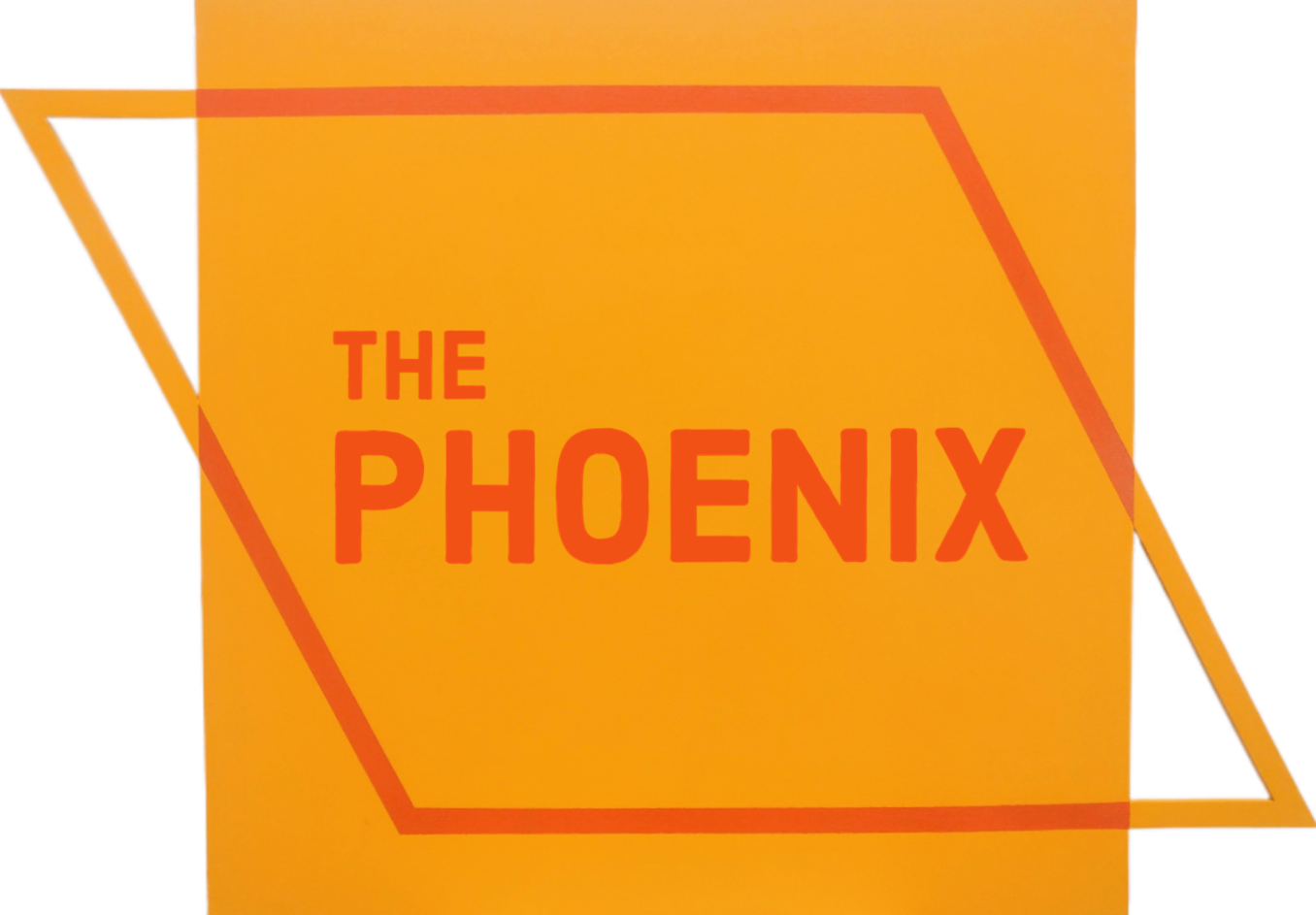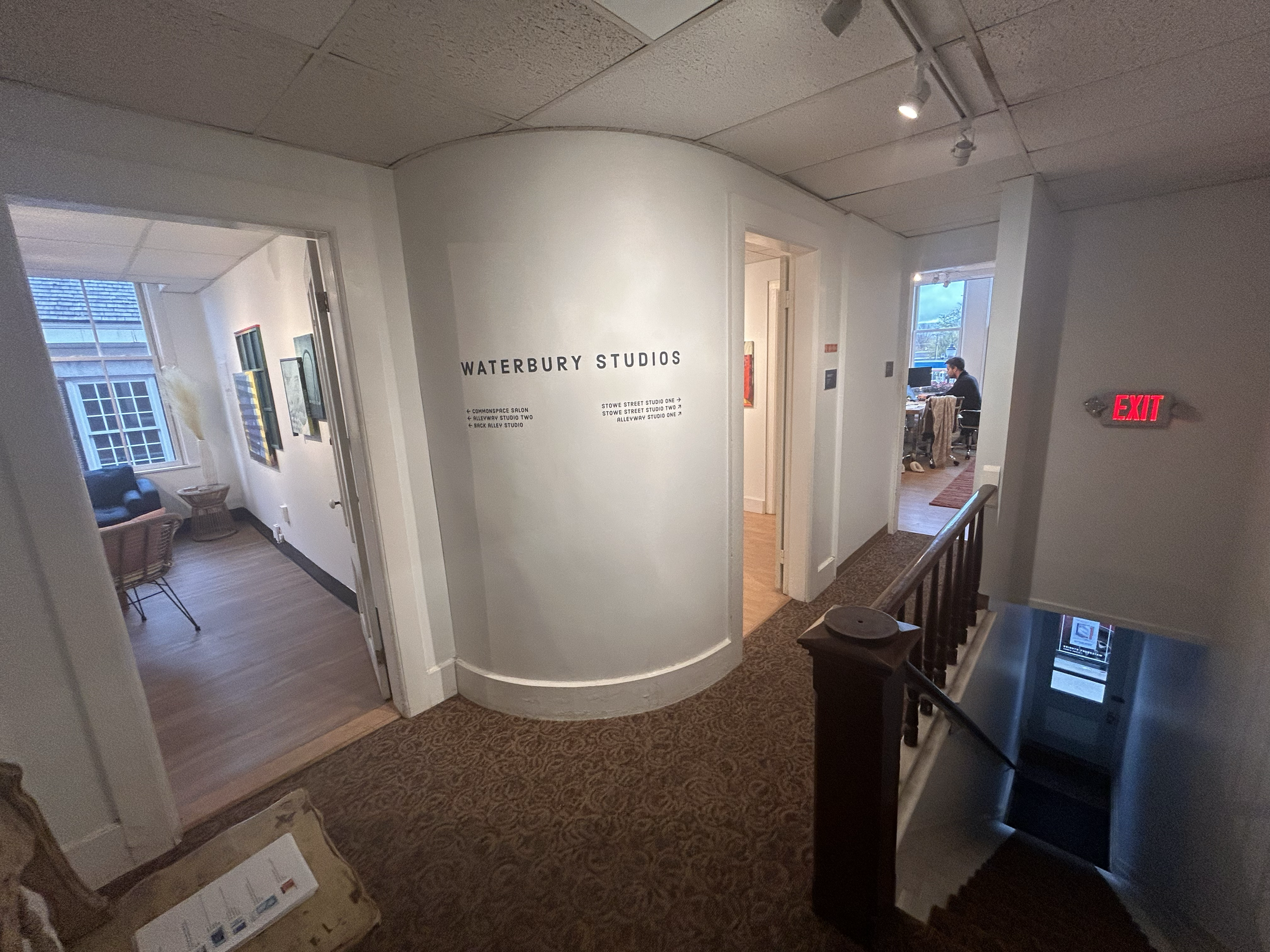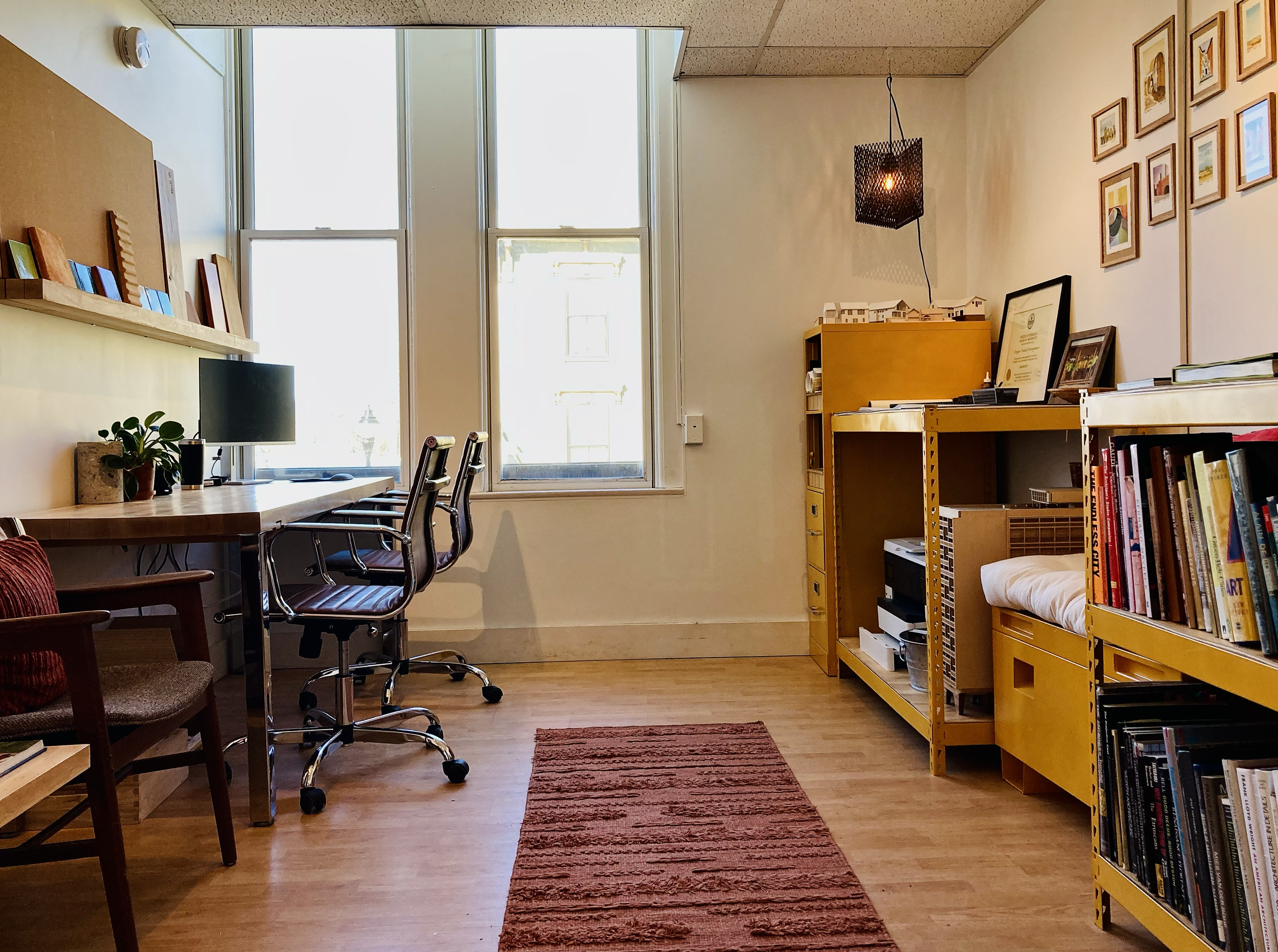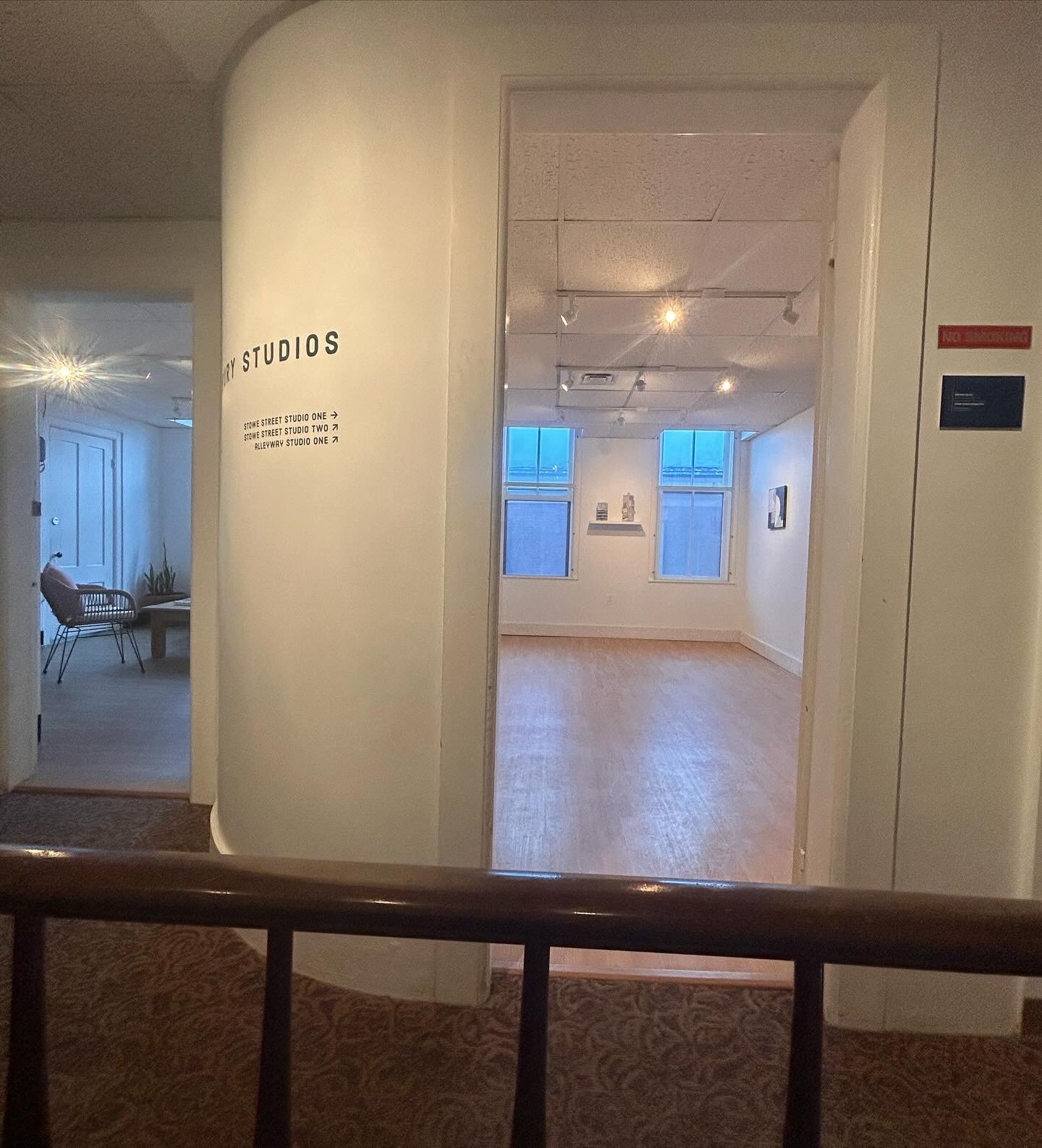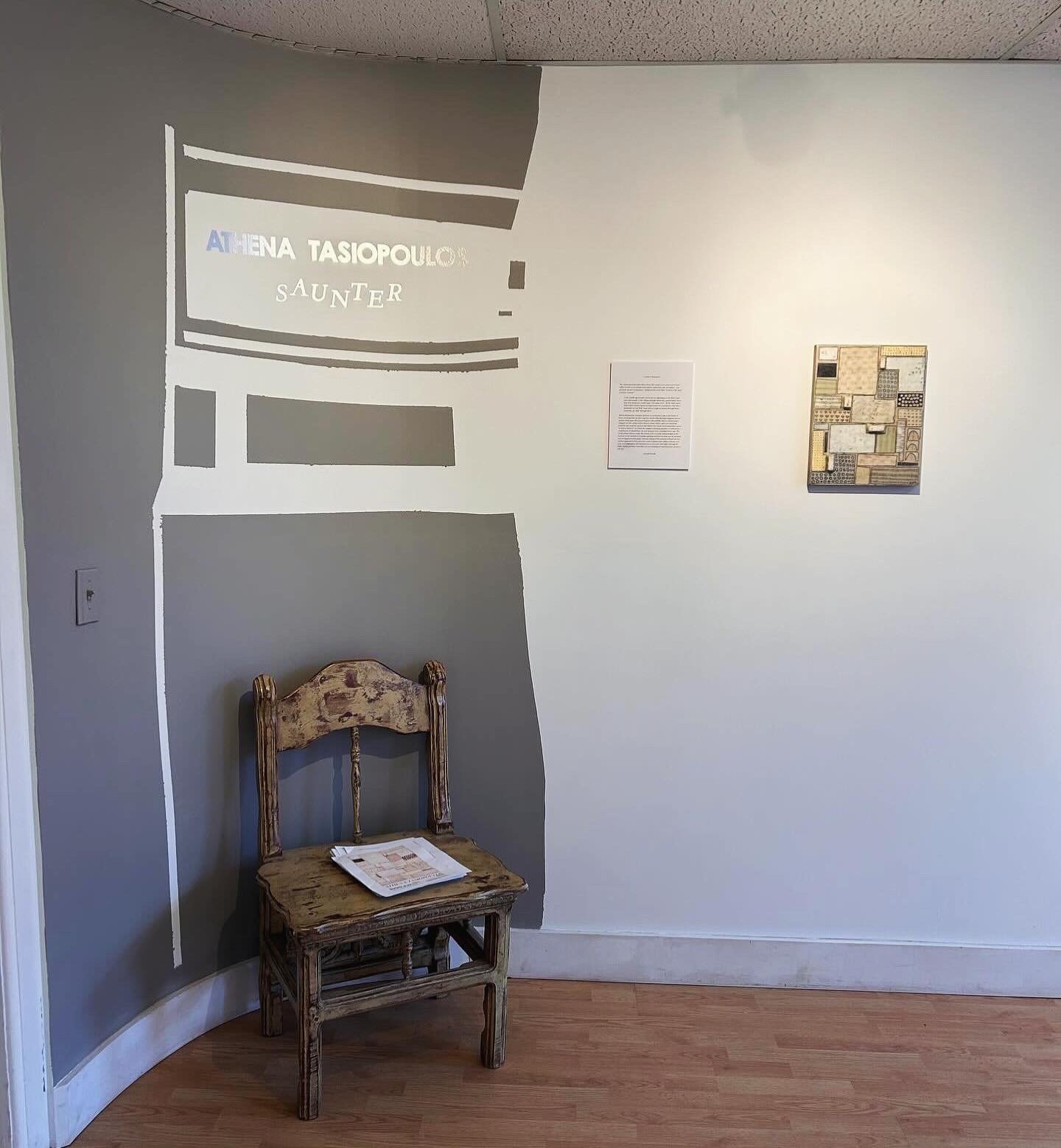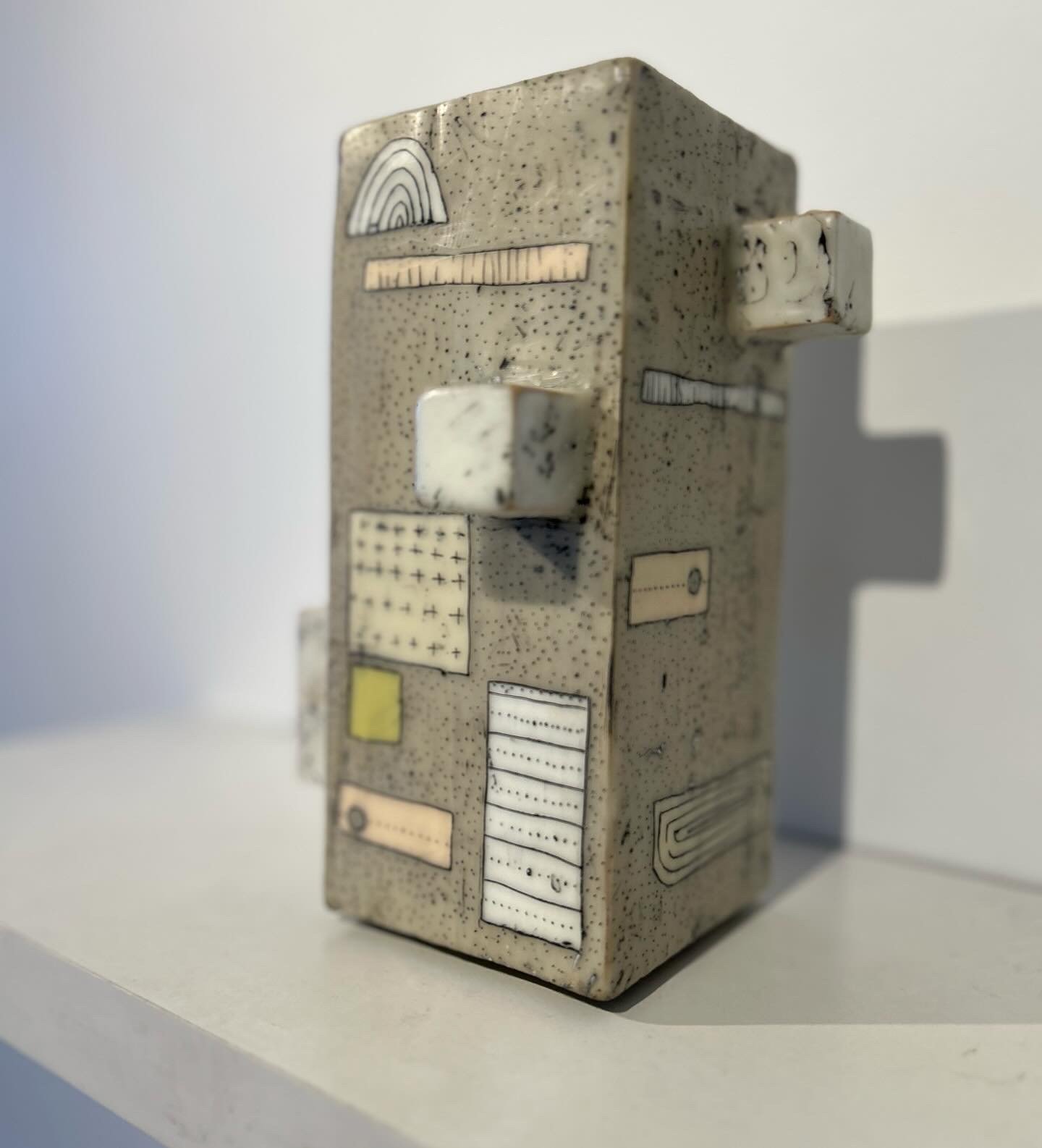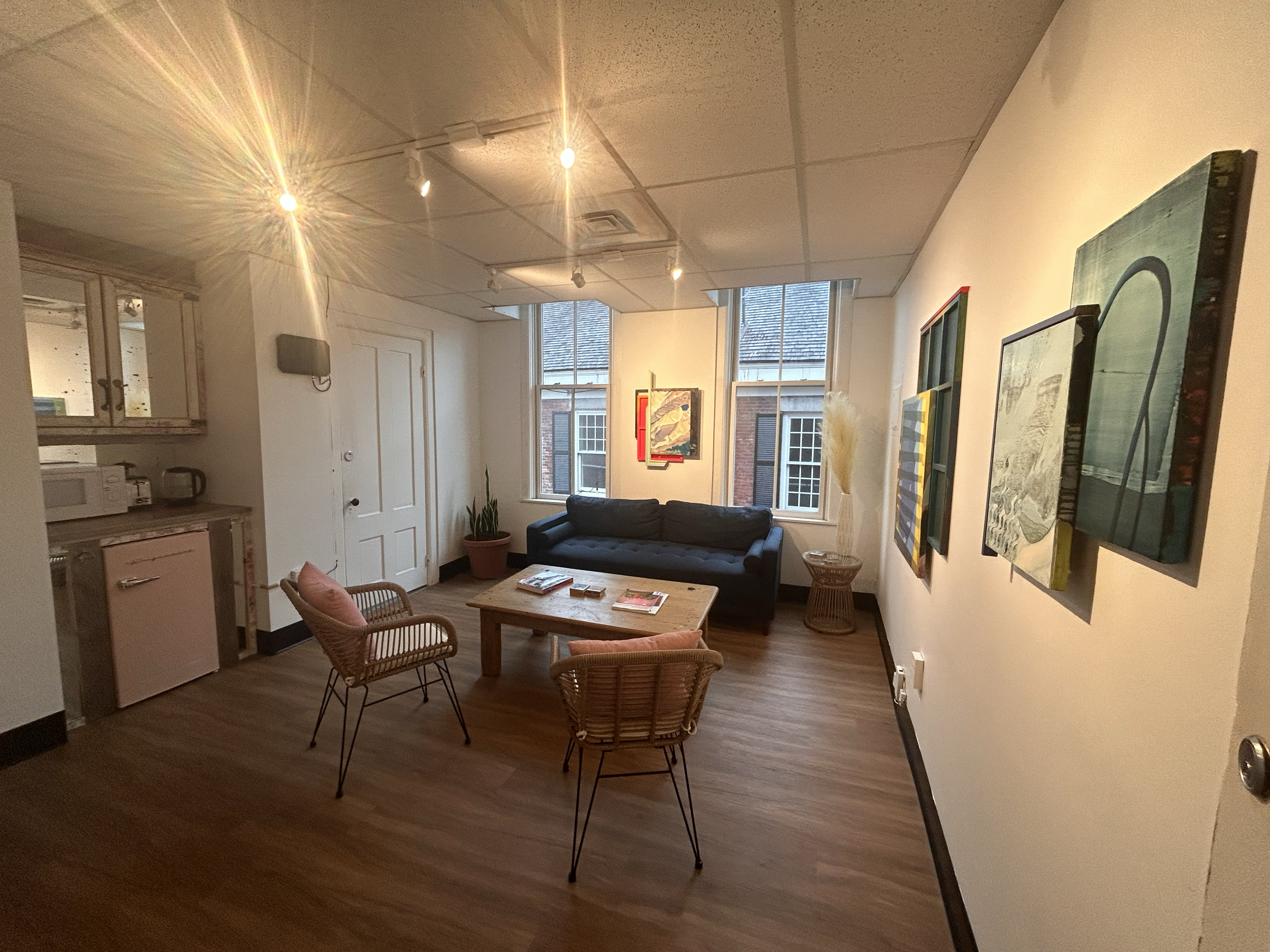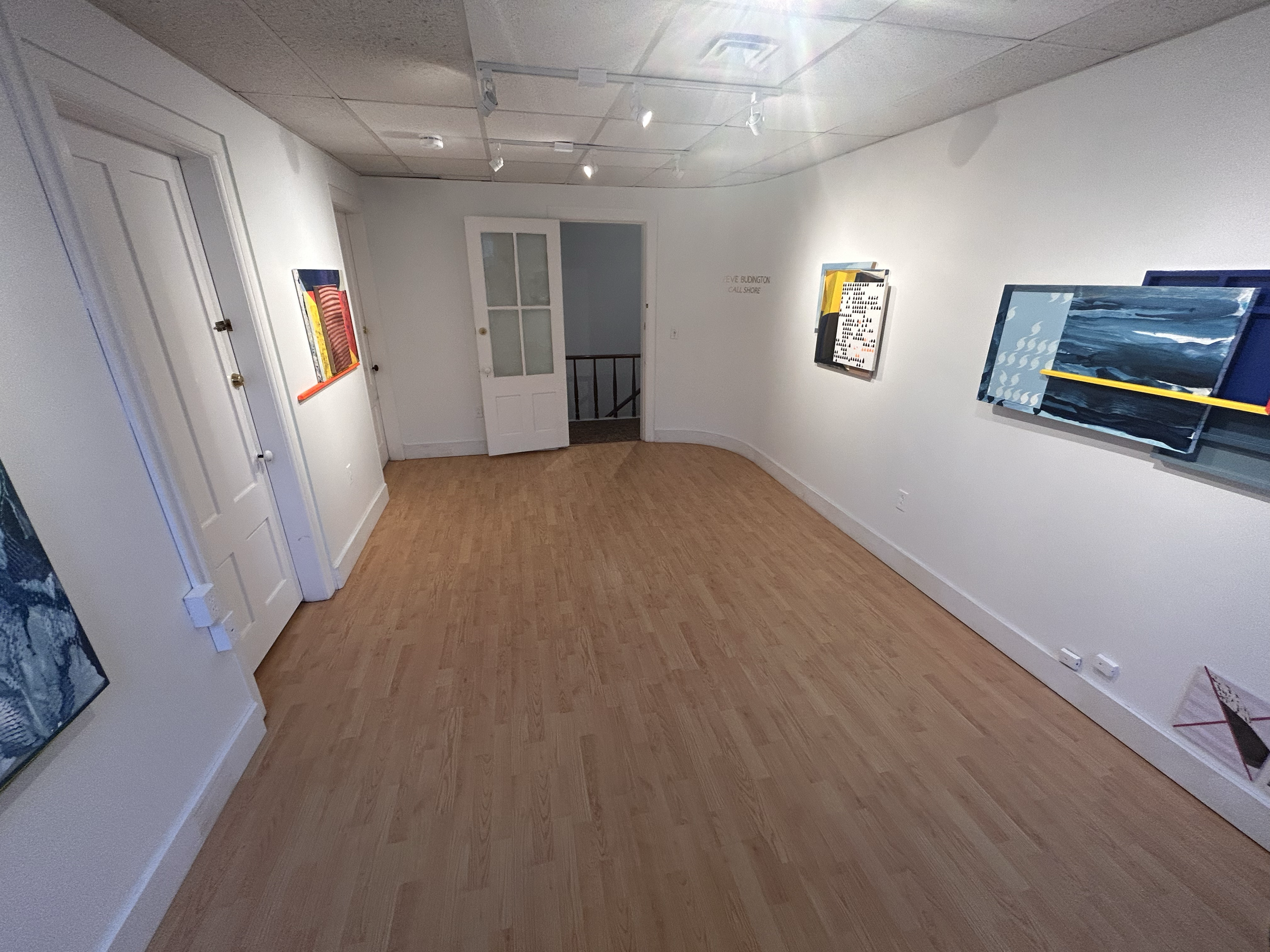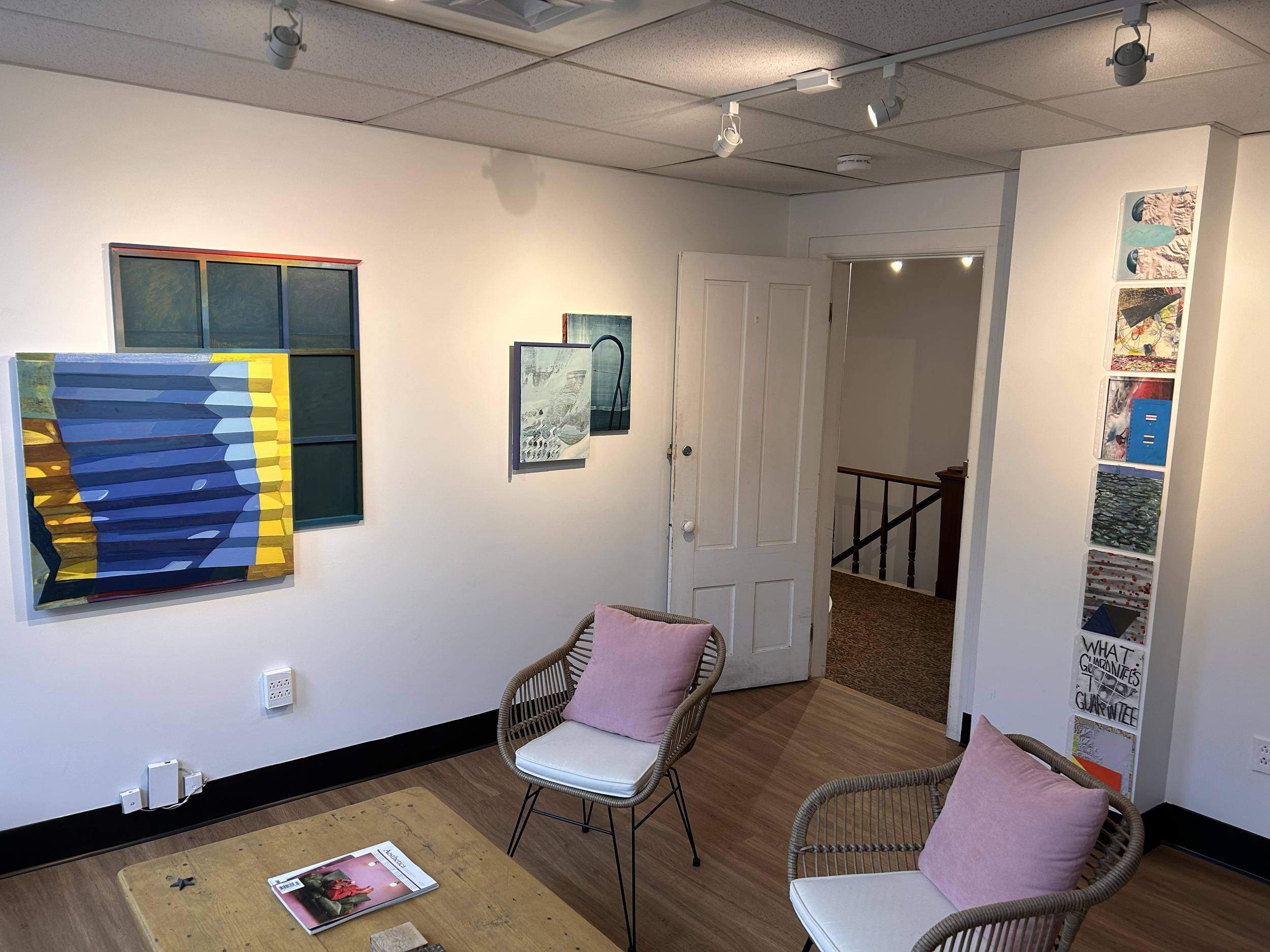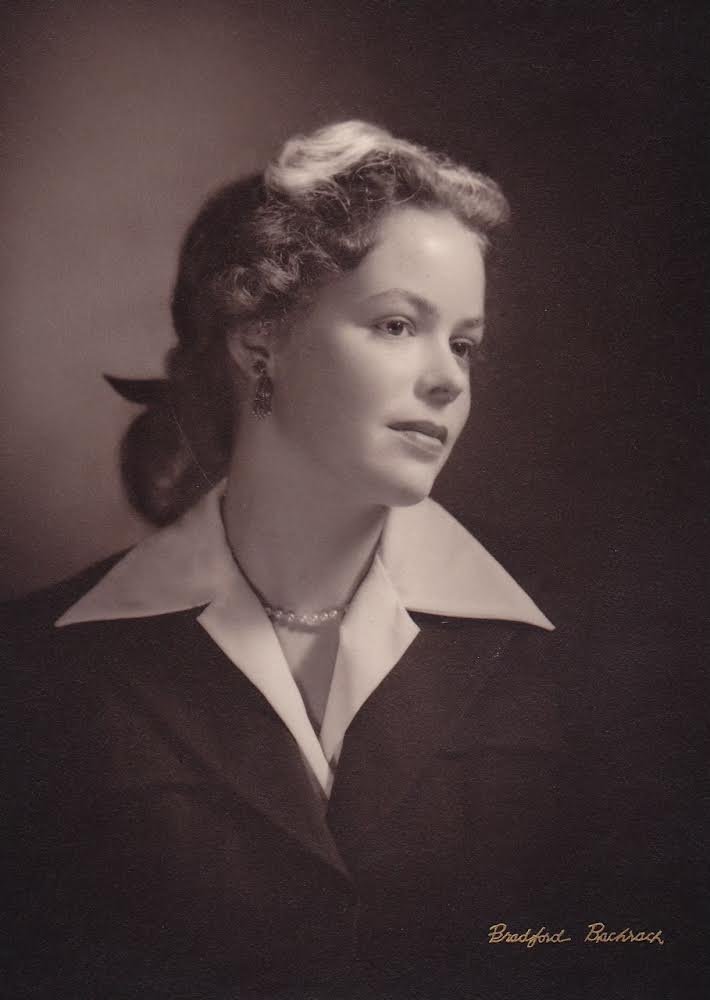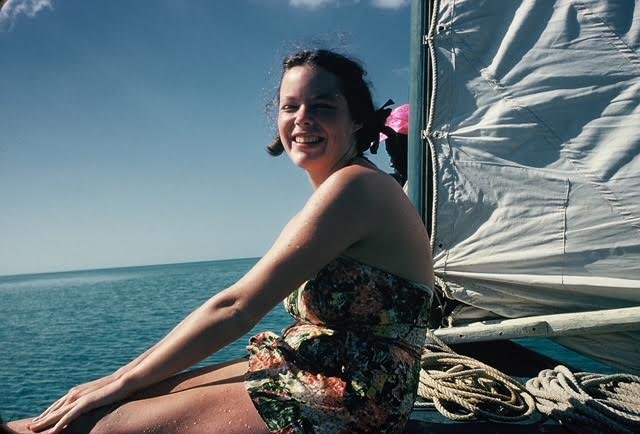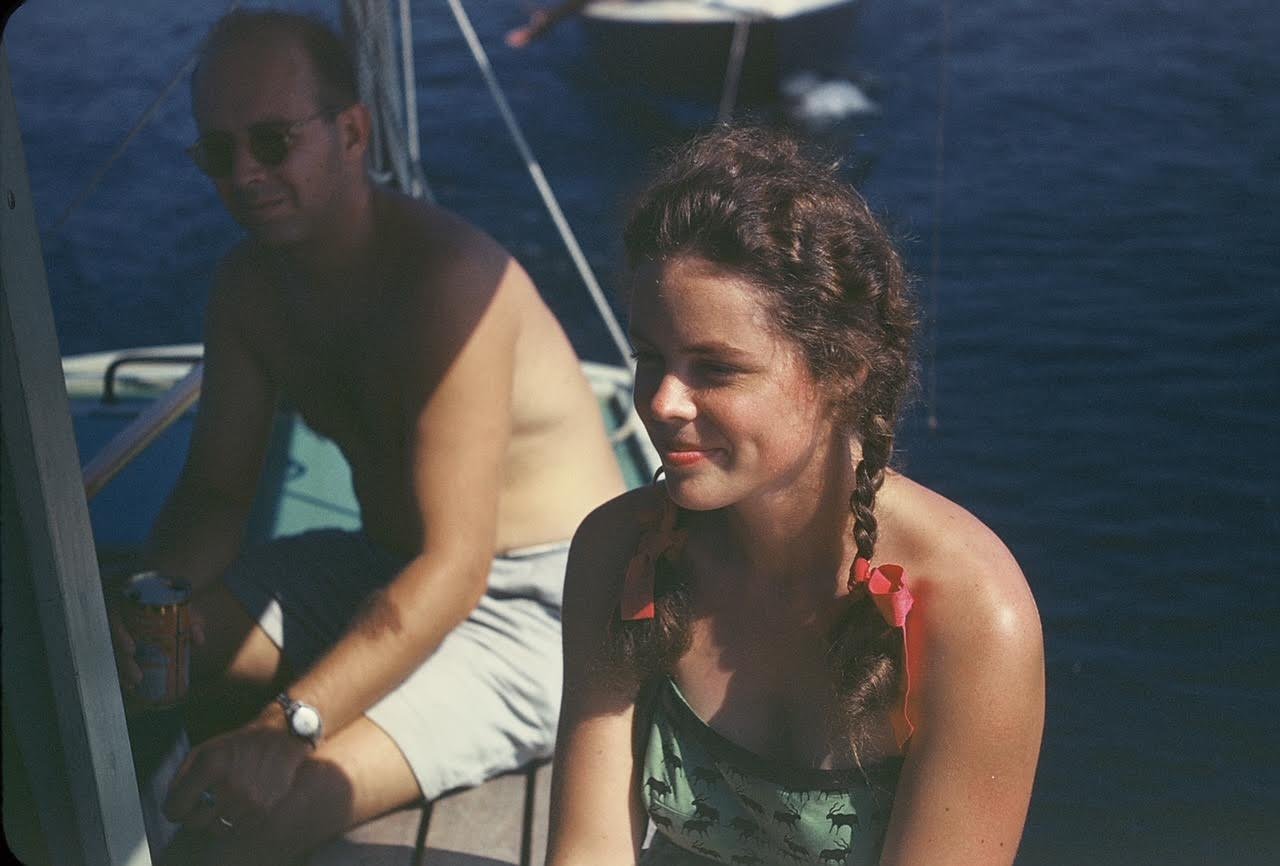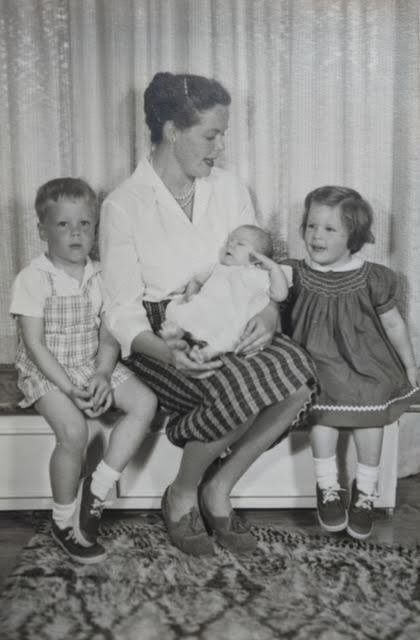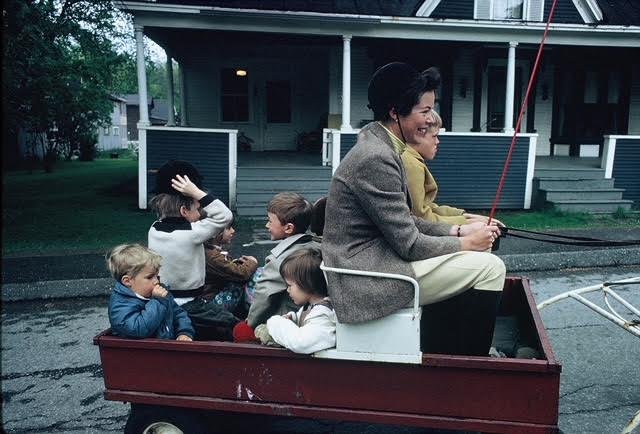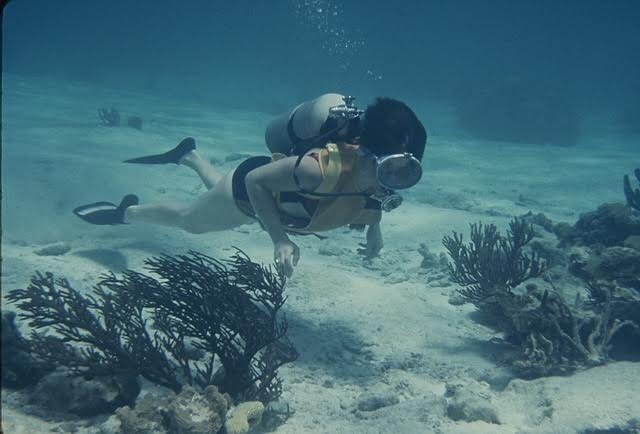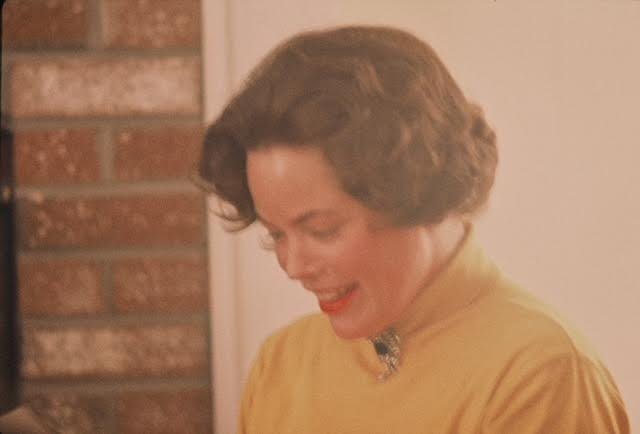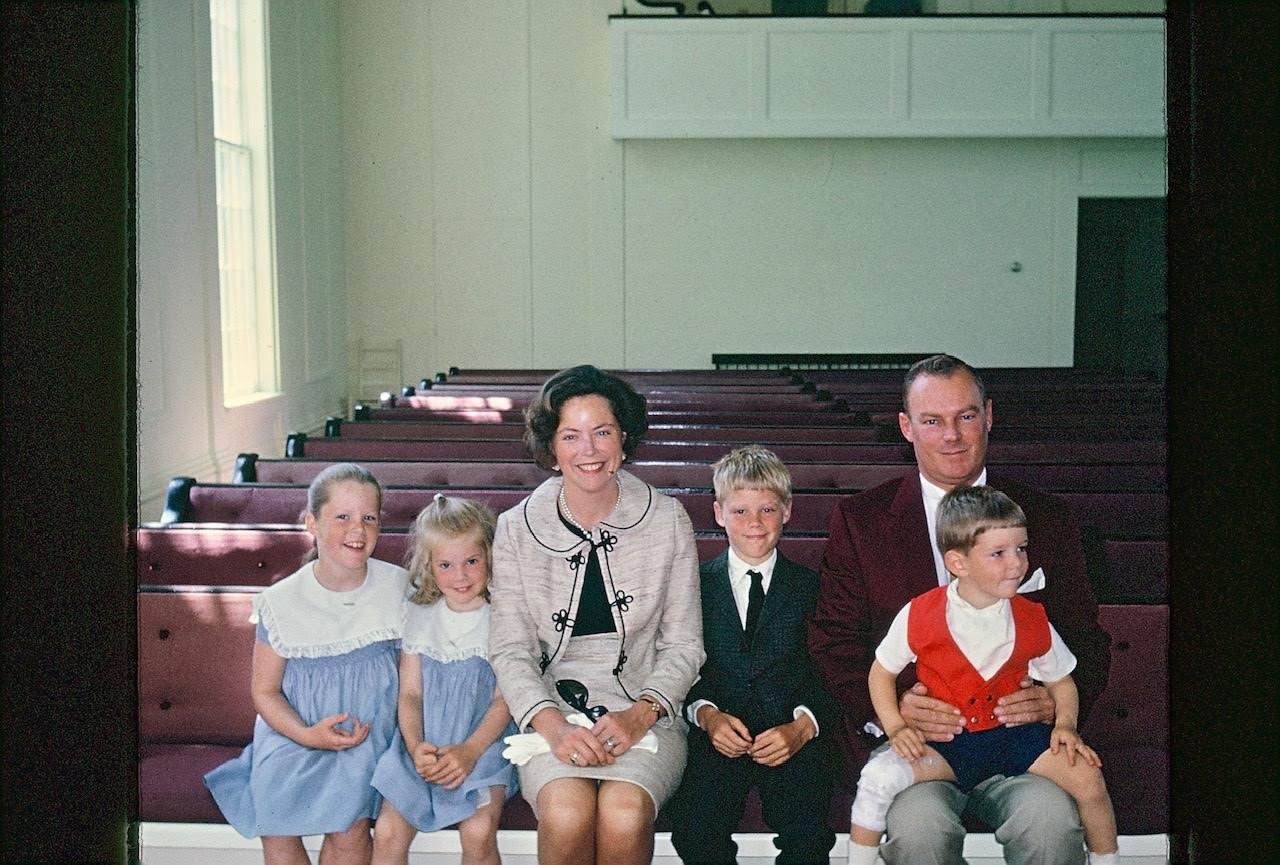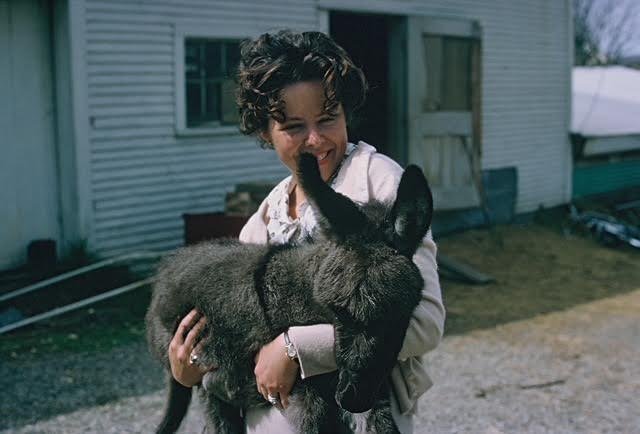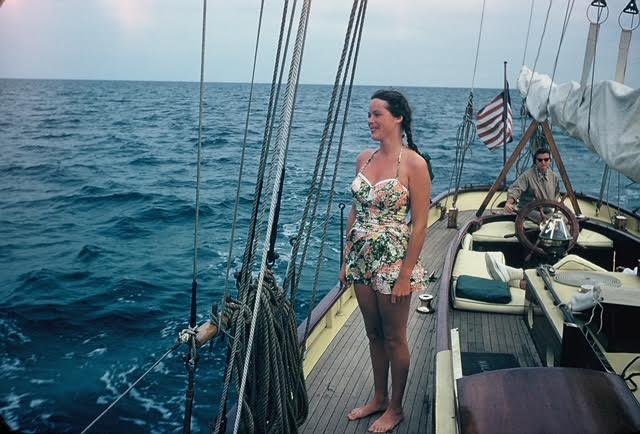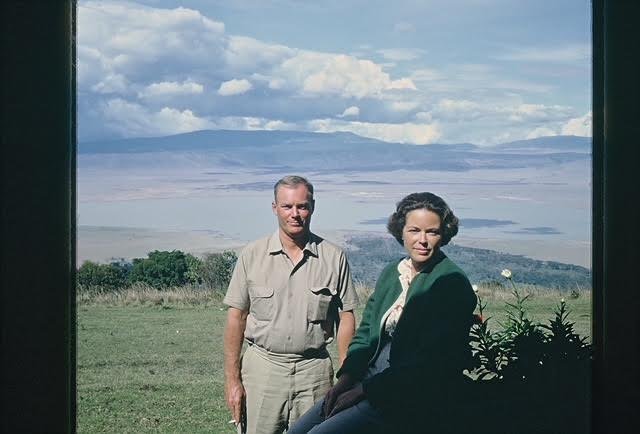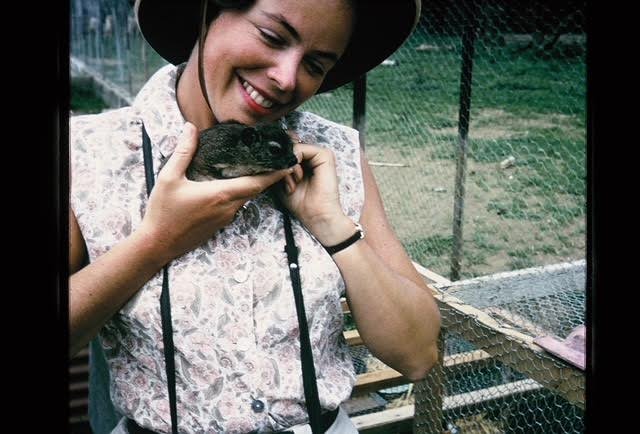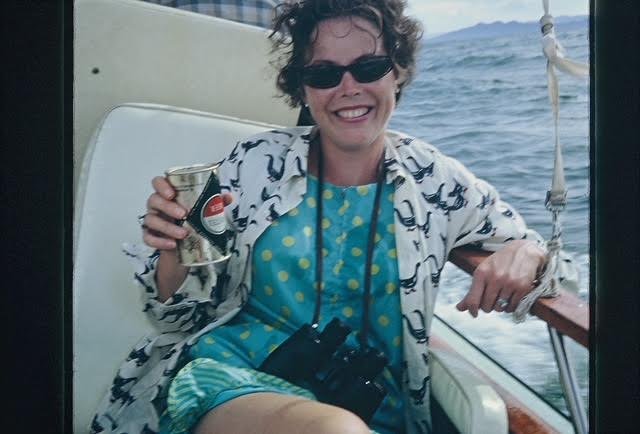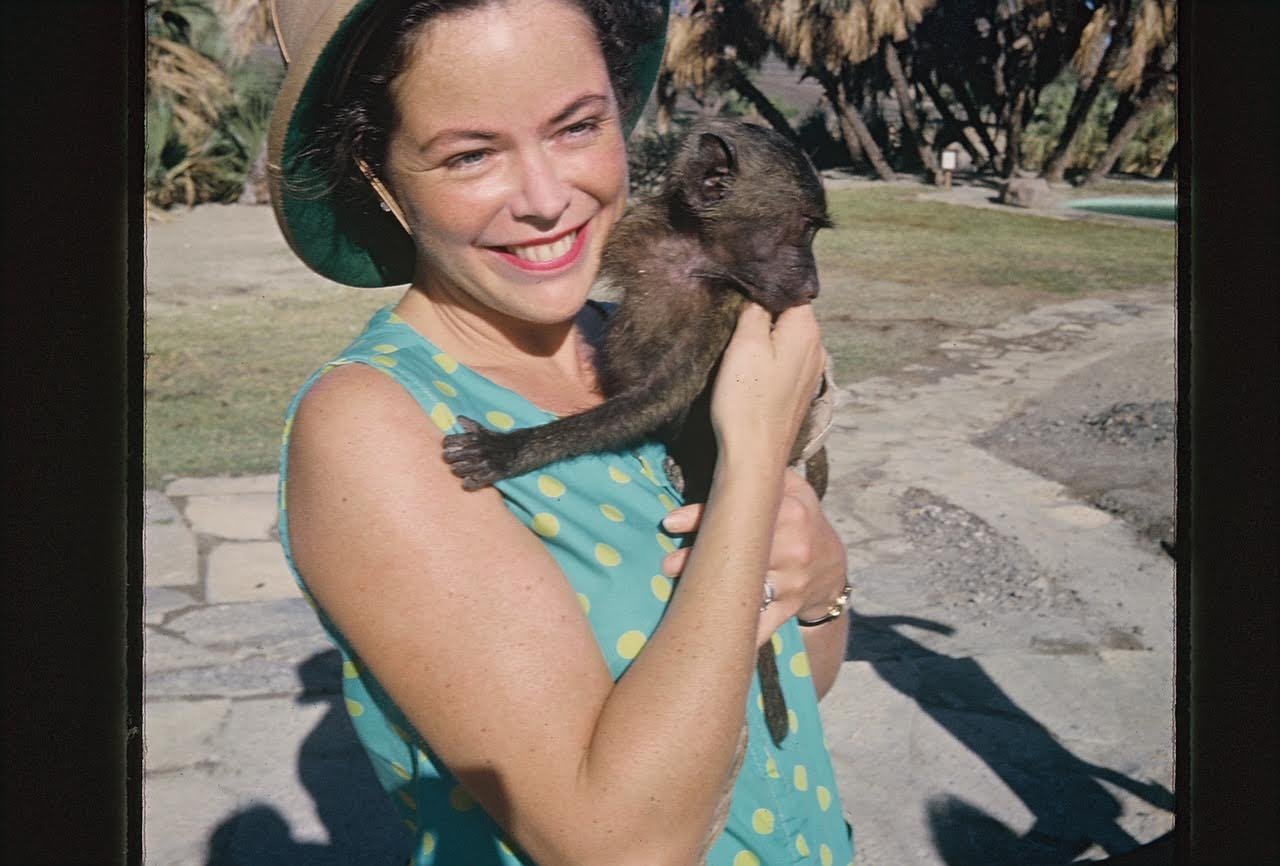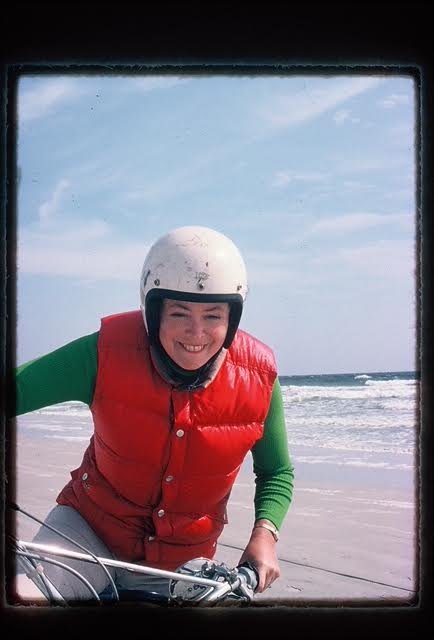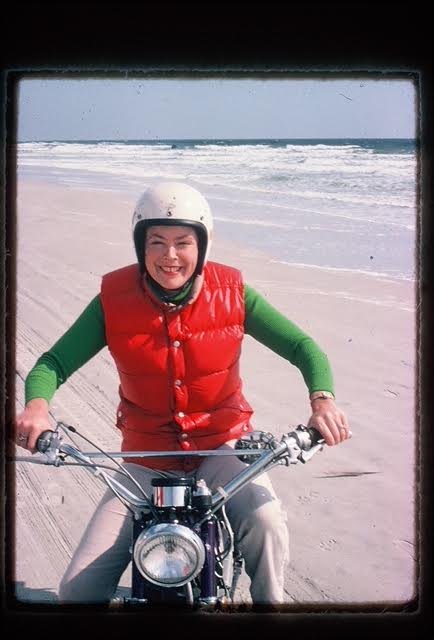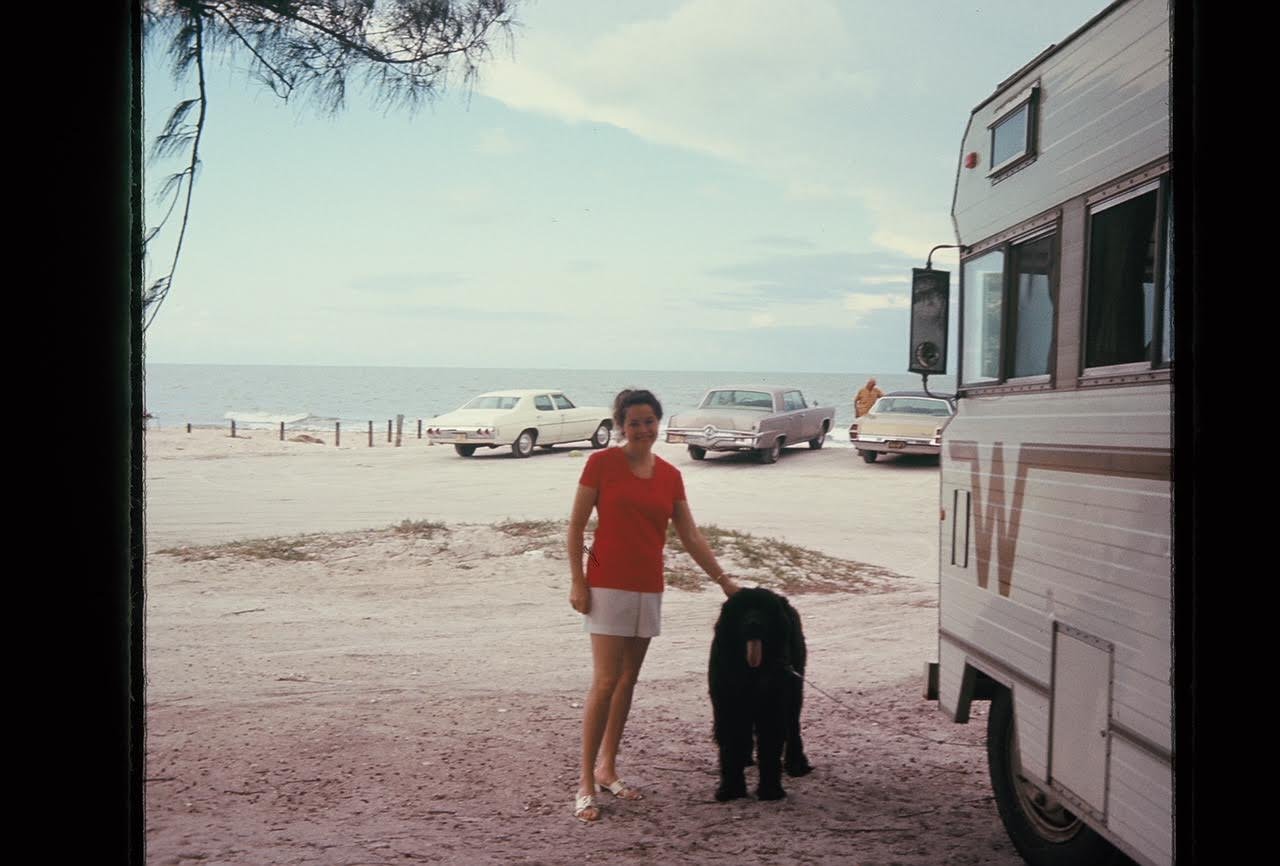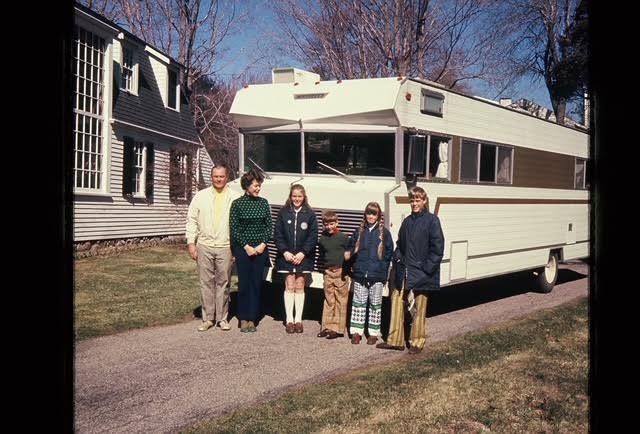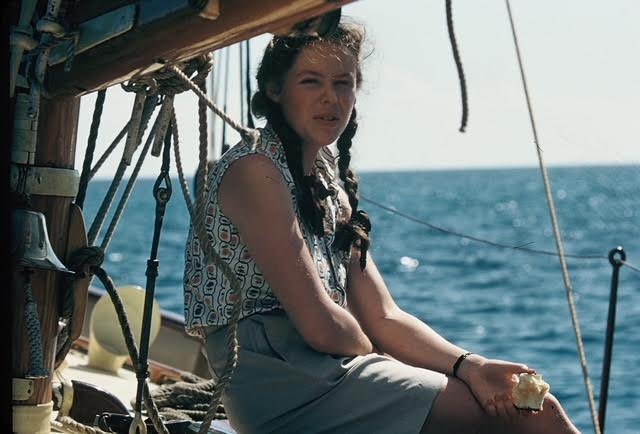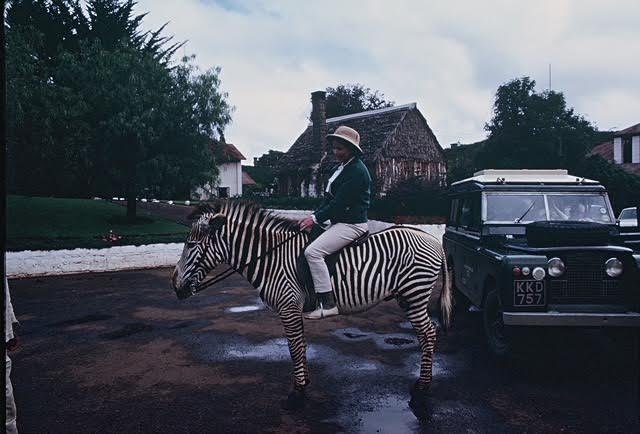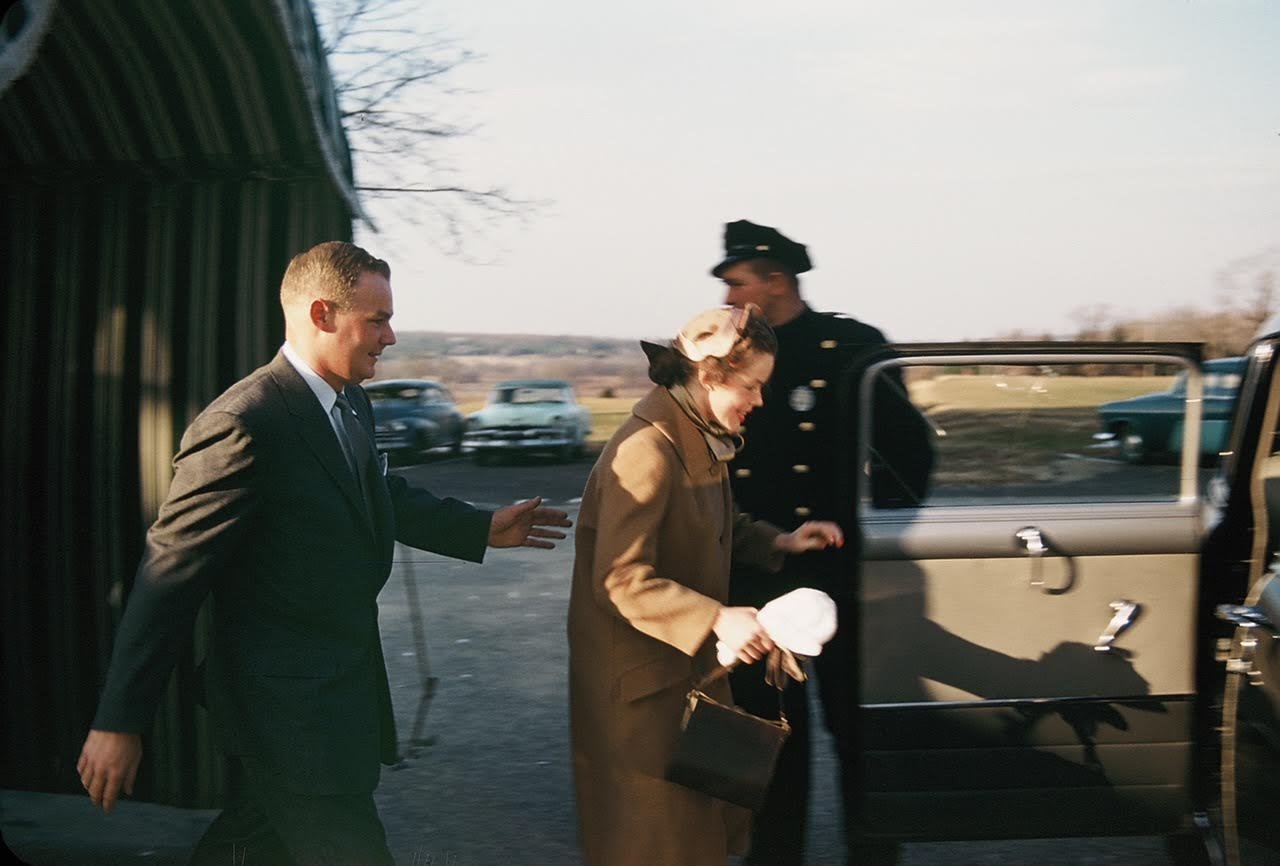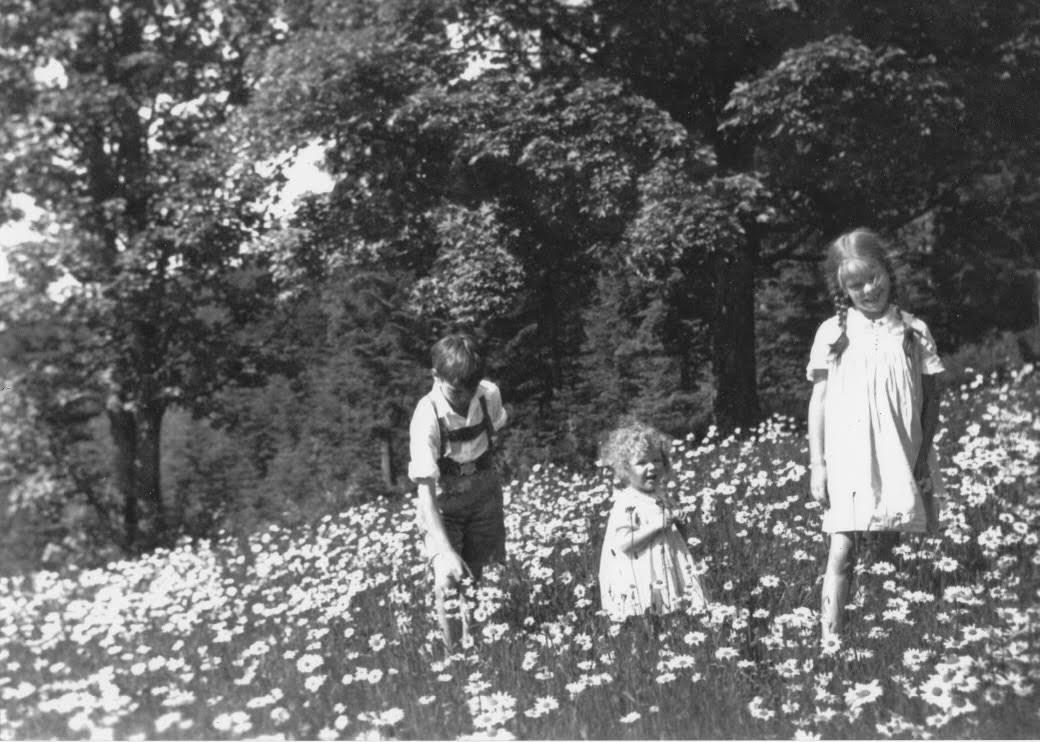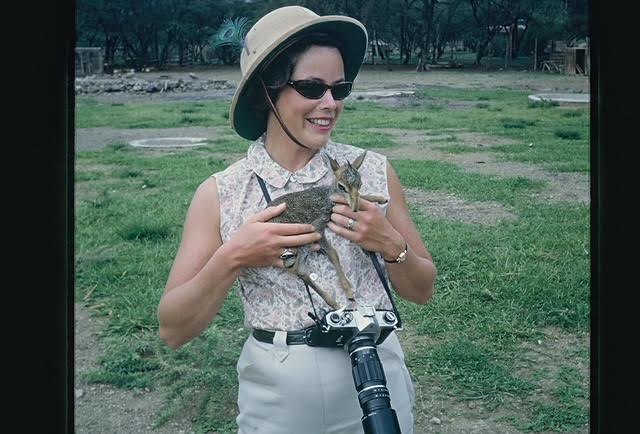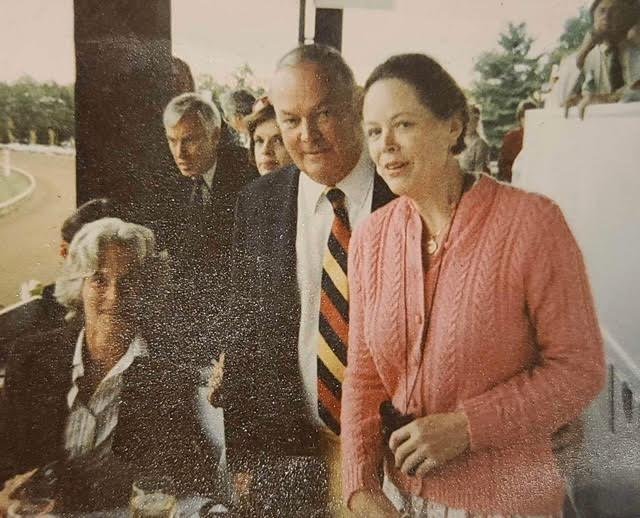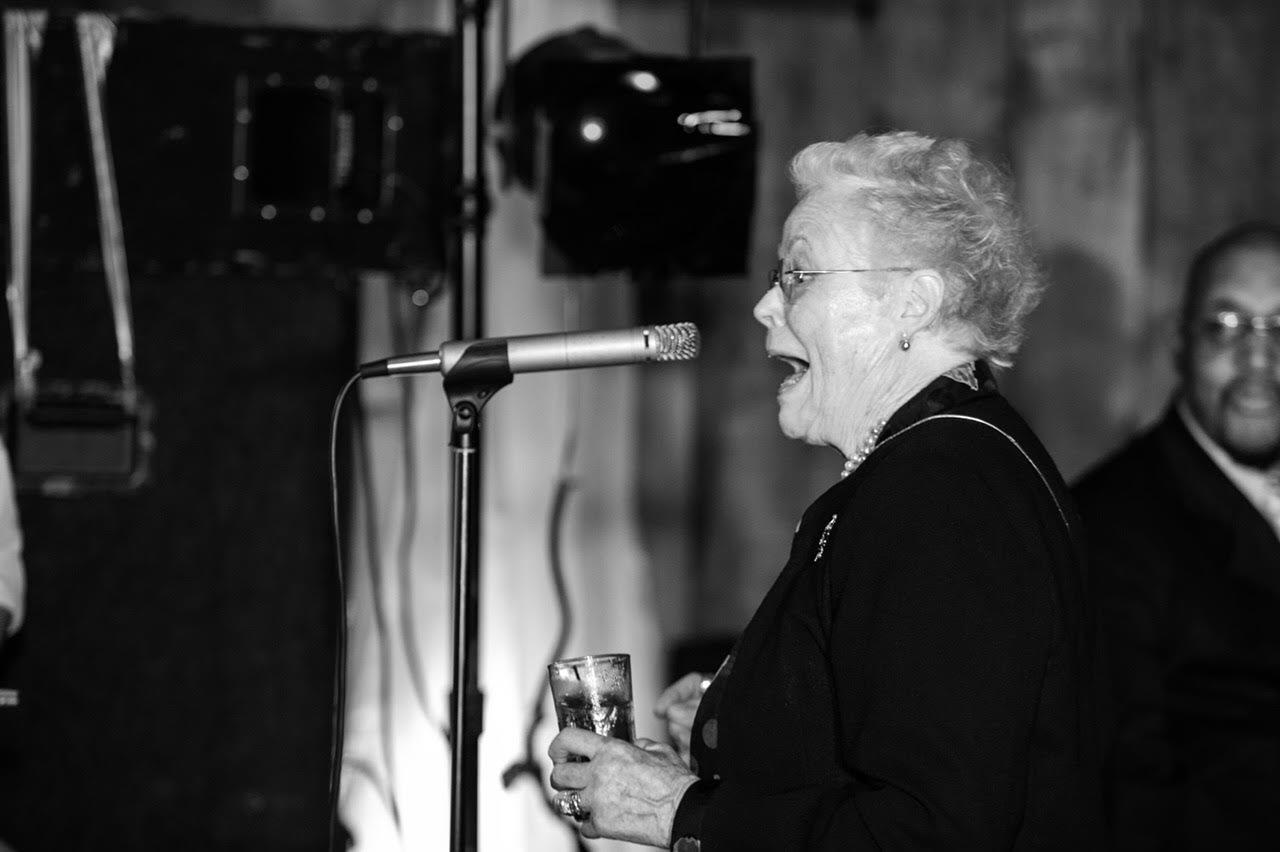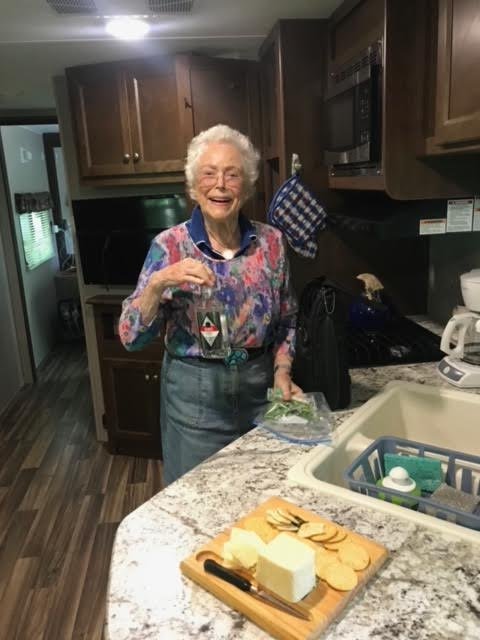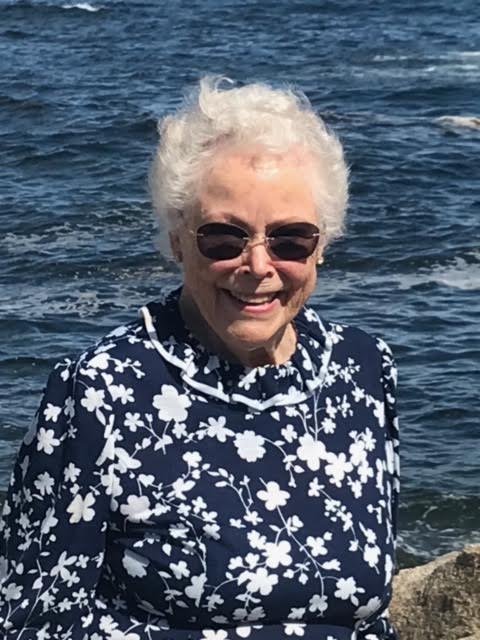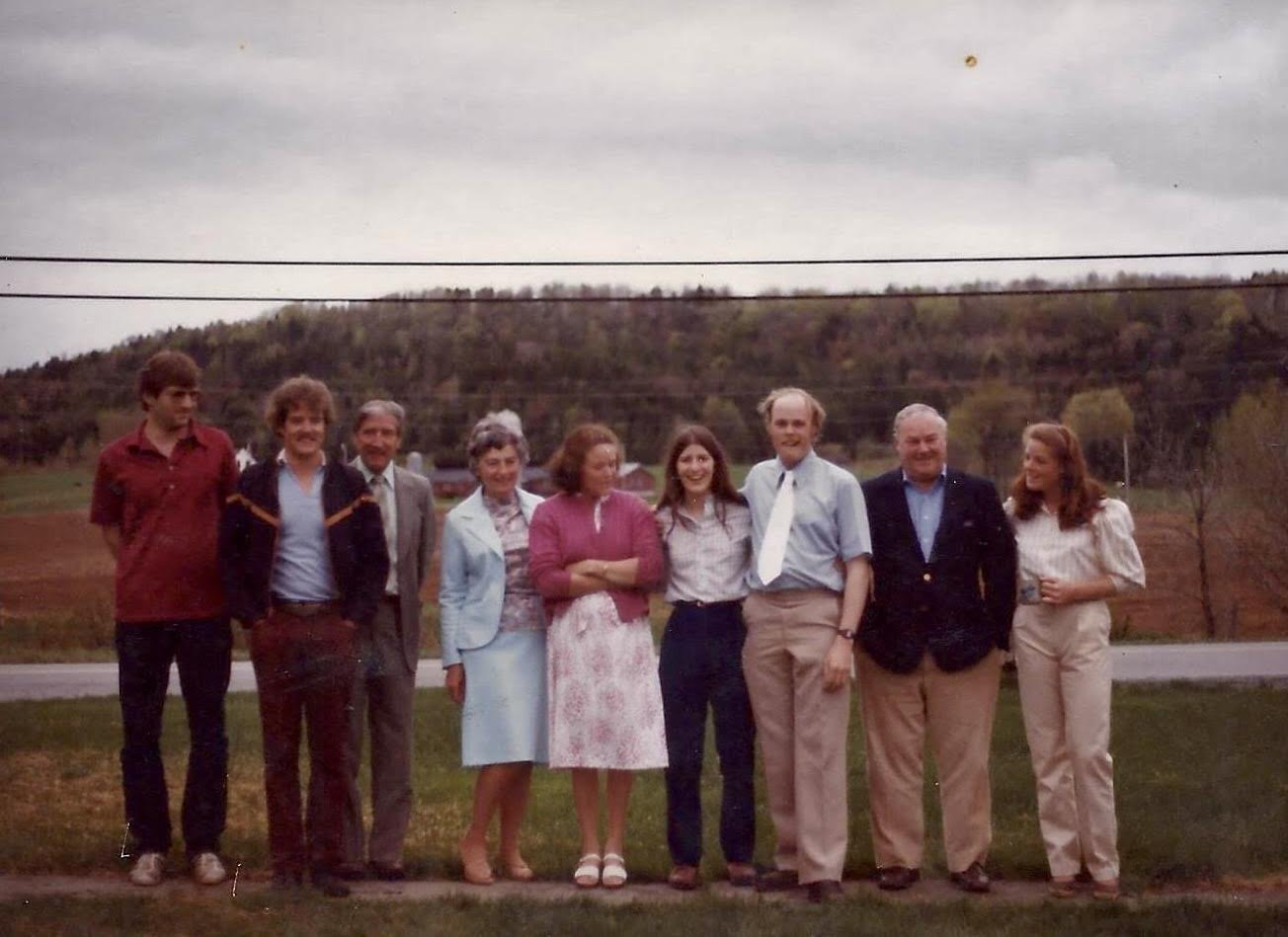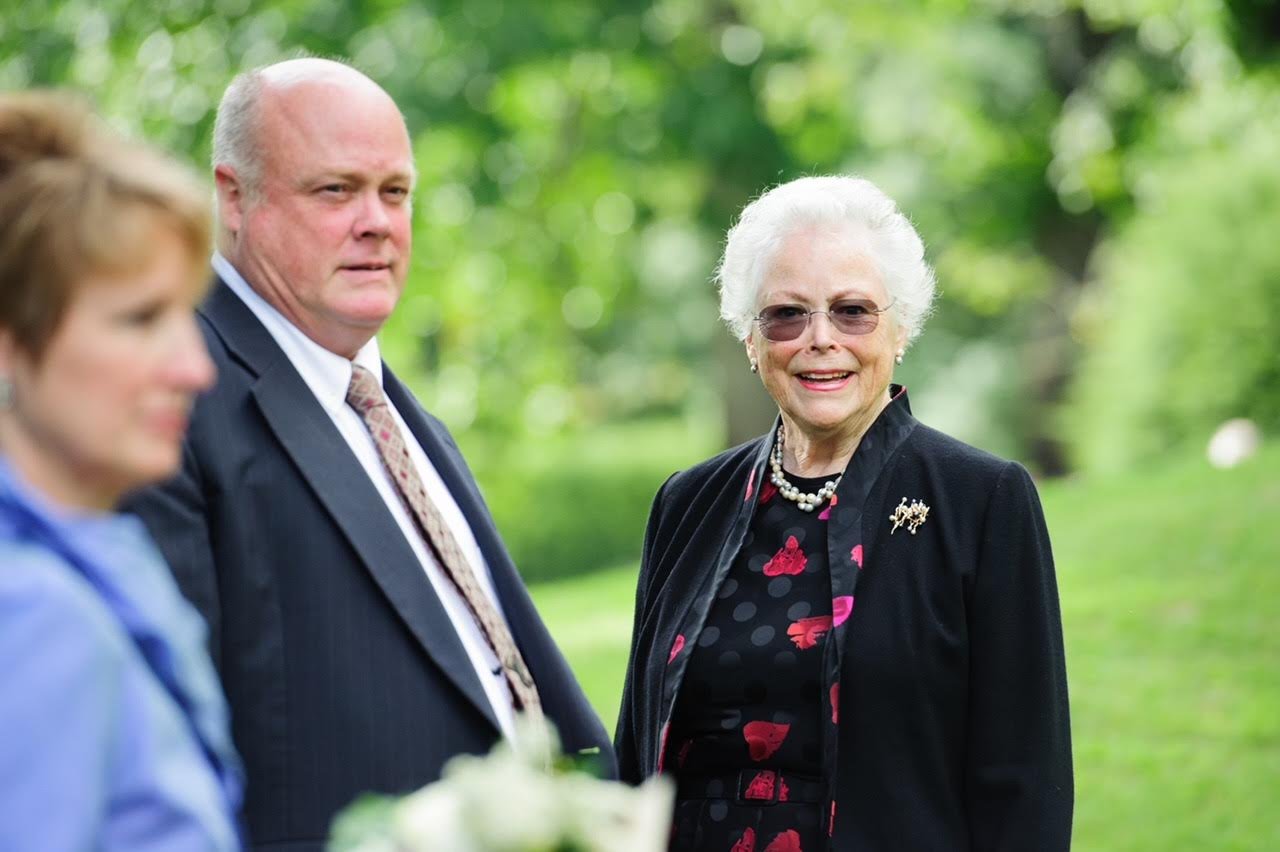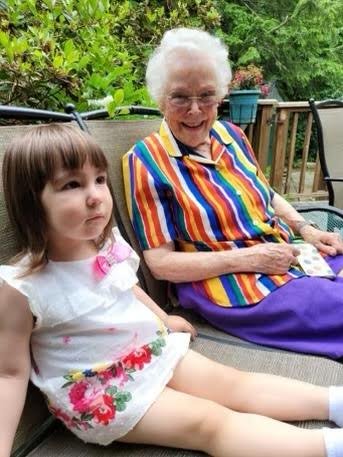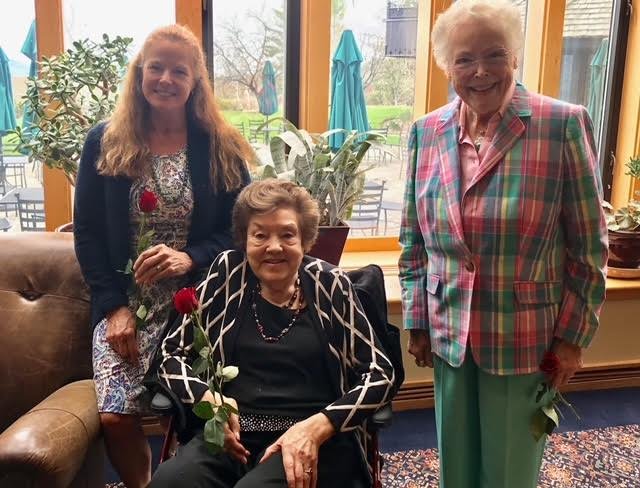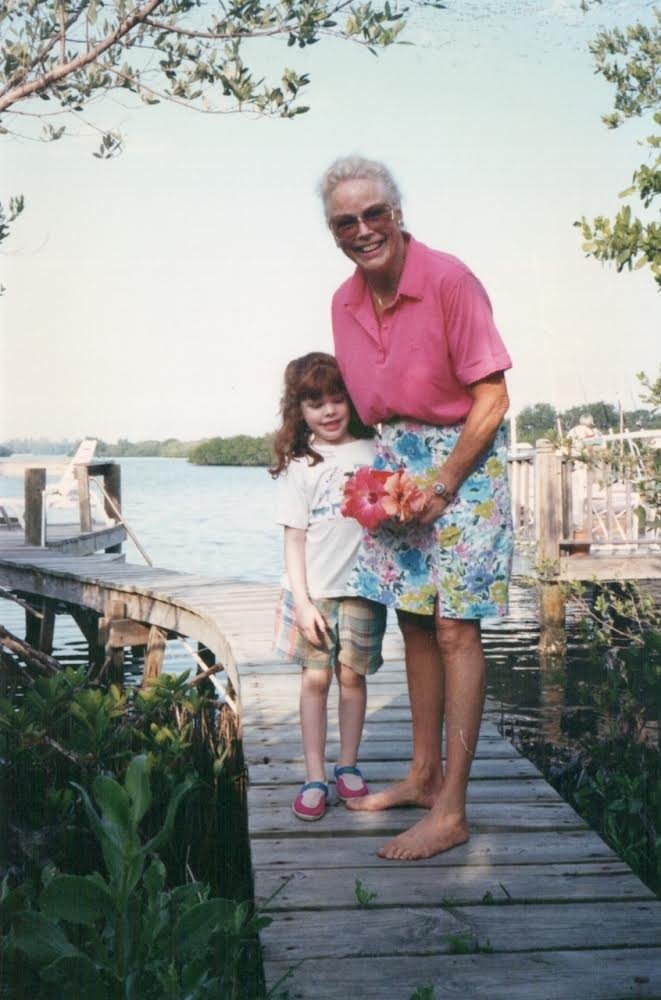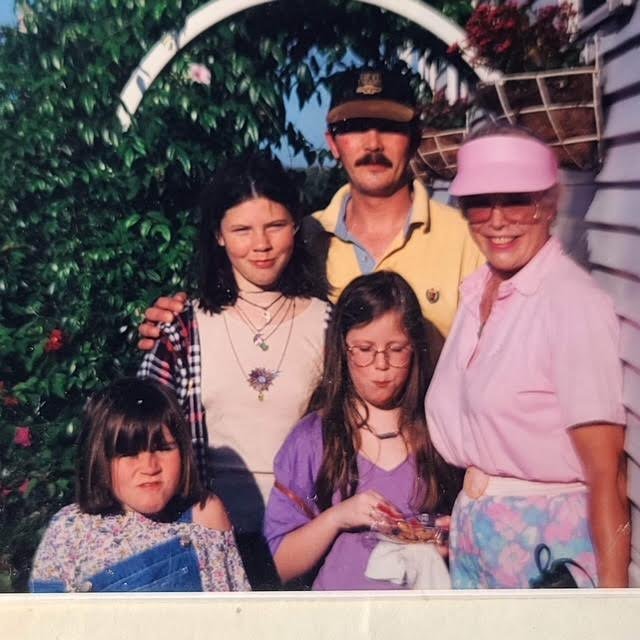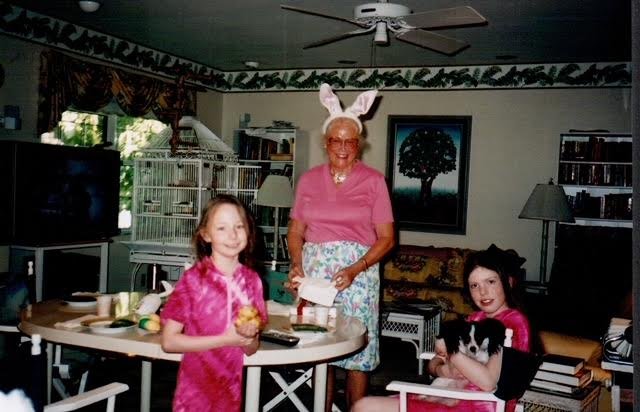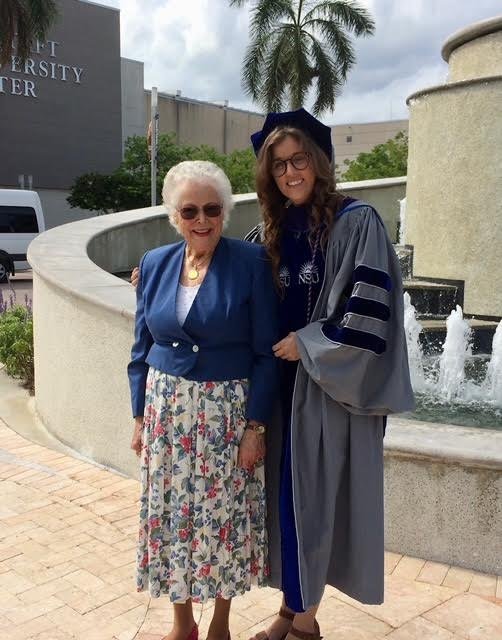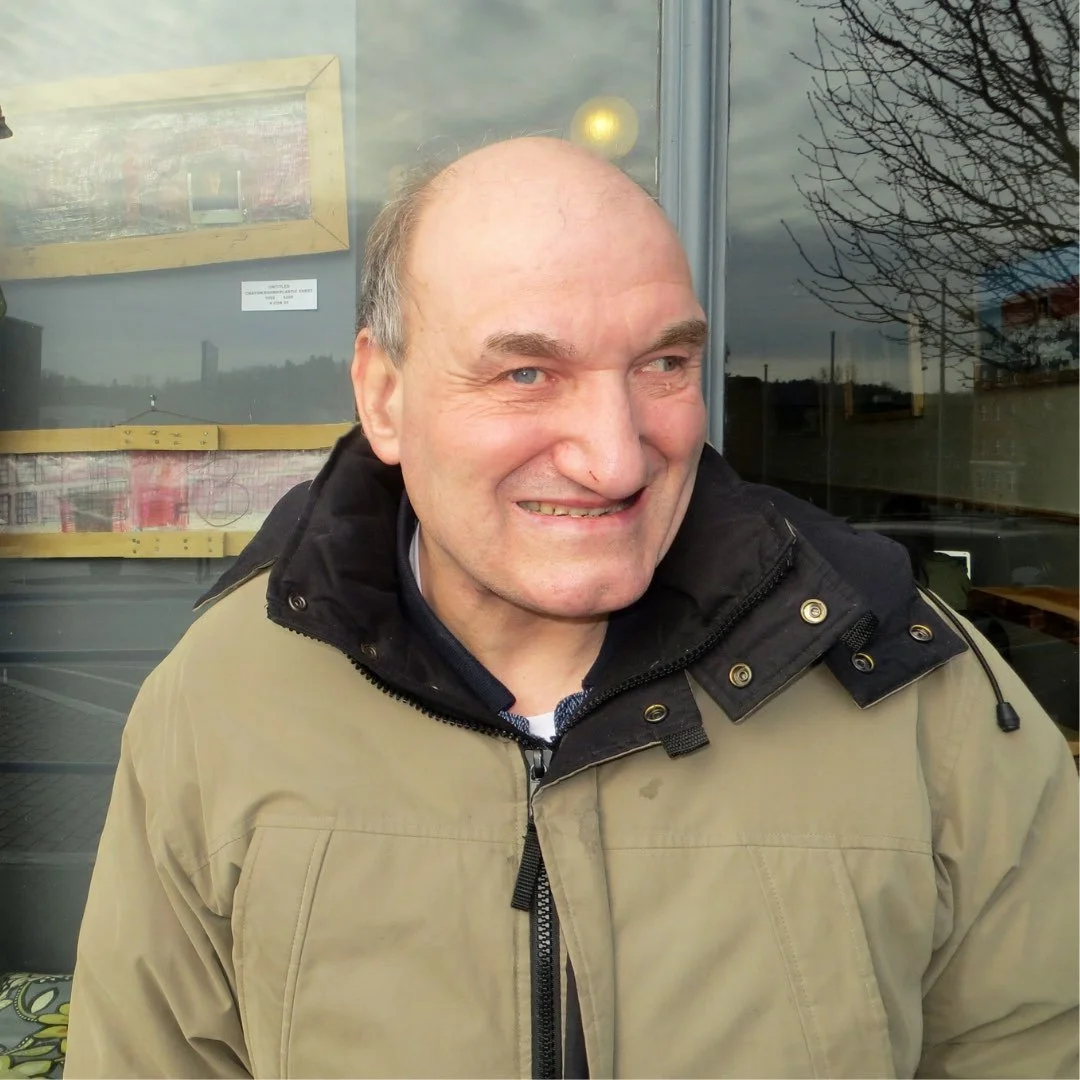Waterbury studios & the hesterly black
studios for creatives
Located on the second floor above The Phoenix, Waterbury Studios is a community of rental studios for private art practice which serve as a brick and mortar home for creative small businesses. Four rotating art shows per year are exhibited in the small adjoining gallery and commonspace salon space. Year rental leases include all utilities, 24 hour keyed access to a private studio and use of the commonspace salon, which has a kitchenette with a fridge, coffee-maker, tea kettle, microwave and cabinets with utensils. A dropsink equipped with a sediment catch is accessible via the all gender restroom. Comcast Business internet is included with rent. All studios are unfurnished and ready for your interior design aesthetic. Open studios events coincide with the quarterly gallery show openings but participation is not required for studio tenants.
Currently there are no vacancies and all studios are rented. Contact Joseph to set up a viewing or be put on the waiting list. Find details about each individual studio and their pricing here.
the Hesterly Black: discovering visionary modern art
The Hesterly Black is the small gallery at the center of the Waterbury Studios community. The Hesterly Black is curated by Joseph Pensak of The Phoenix and features solo shows of visionary contemporary work by artists with a penchant for the uncanny. The curation leans toward artists who are not only creating striking new work but a larger imagined world for the work to inhabit. The gallery is named in honor of Hesterly Fearing Black, a long-time resident of Stowe, Vermont who lived her 90 years on this earth with ferocity and visionary courage. The Phoenix and Waterbury Studios are co-owned by Hesterly’s granddaughter, Anna Black.
Read Hesterly Black’s obituary, written by her daughter Hesterly “Lee Lee” Black Goodson, in the Stowe Reporter here.
CURRENTLY ON EXHIBIT at
THE HESTERLY BLACK
Inquire at TREEHOUSE for a private viewing during The Phoenix’s open hours.
larry bissonnette: coming august 2025
LARRY BISSONNETTE
MARY ADMASIAN: PAST IS PRESENT
WORKS ON PAPER 1983-2013
APRIL 18TH-JUNE 20TH, 2025
OPENING RECEPTION FRIDAY, APRIL 18TH, 6-8PM
ARTIST STATEMENT
This exhibition, titled PAST IS PRESENT, mirrors how my current work has been influenced by my earlier explorations. It has been inspiring and yet at times disturbing to see how many internal and external struggles remain the same.
This curated collection is selected from two bodies of work: “The Y-Con Series” (1983-1989) defined me as an abstract artist discovering my own mark-making, iconography, and color palette. The second, “Peering Through” (2007-2013), is a set of ocular observations created daily during this period.
These works on paper are a record of experience and emotion – a revelation of the time-honored process of self-exploration and how it reveals hidden forms and connective energy. The geometric planes in my compositions of flat-layered surfaces suggest extraterrestrial spaces and biomorphic forms, as well as reflect a visual key to delving into my own life experiences and how I have come to be shaped by them. Revisiting the history of these pieces reminds me of what has been discovered, how these concepts evolved, what may have been lost over time and what is yet to be found.
–Mary Admasian
CURATOR’S STATEMENT
We’re thrilled to present this body of works on paper from Mary Admasian’s early years. These pieces from the 80s were some of Mary’s breakthrough moments as an emerging artist and have mostly gone unseen until now. We are including more recent works as well to show the through-line of these stunning biomorphic figures into her better known work in wood and found objects. The emotional impact of these pictures lies in the tension these living figures evoke in their grasping, penetrating and cradling movements. Power and pleasure and pain punch through and seem to be directed at gut level (or lower). Imagine yourself as the holder or the held—either way the physicality of this work should not be missed, as we are meant to enter in, leave, relinquish or spit out. Notice the use of color and its dual effect in discomfiting and exciting—there are plant-like reproductive organs having fun while also backgrounding a vague and ominous unease. Mary Admasian is channeling Spirit but it is never disembodied; the luminous is always enfleshed and earth-bound.
—Joseph Pensak
PAST GALLERY SHOWS
anna a. black: Be radical?
january 24th-april 11th, 2025
curator’s statement
Anna A. Black’s paintings invite the viewer into a world where color, shape, texture and line are personal and emotional. You are meant to dive into her paintings with your imagination fully turned on, feeling your way though. The titles are helpful to this end, but you are intended to see what you see—there are faces and imaginary creatures hiding in plain (and not so plain) sight, and the floating lines, blocks and shapes give the edge to edge ethereal haze a structure to climb onto. Black’s colors are at times blisteringly bright—stand and feel them warming you—and these are achieved by pure pigments sourced from a shop in Chelsea, NYC mixed in with her usual acrylics. Hot glue, melted crayons, collage, and dried paint give the paintings additional depth and texture. Characters at play often join in, and you are invited too—this group of pantings follows the ethic of punk icon Andrew WK—they party hard.
This is Anna A. Black’s debut show and is particularly meaningful because the gallery is named after her grandmother, the late Hesterly Fearing Black.
—Joseph Pensak, Curator
erika lawlor schmidt: keeping time
september 6th-december 20th, 2024
ARTIST STATEMENT
My work is about the assimilation of observation and experience of the body, psyche and spiritual life force, and finding connections the world around us. I most often work in 'series' arriving through a collage sensibility where fragments, images and symbolic elements are integrated fused layered in order to capture a momentary glimpse, thought or view. A view that originates in a belief I share with Eastern philosophies, in that the world is made up of a complex web of interrelating parts, where the division of nature into separate objects is not fundamental, rather fluid and ever-changing in character, a view that contains time and change as essential features. I use a variety of materials and sources in my work and create time-based performance media as well. The integration of mediums is essential to expressing a search for balance within ambiguous and incongruent experience. Key visual elements are repletion, rhythm and pattern. Process and ritual are also important to reflecting upon the intrinsic circular nature of all things. Through the work, I locate and reveal wide-ranged yet fragile connections within co-existing systems. This becomes a means toward discovering that in order to achieve unity, one must avoid separating the elements.
—Erika Lawlor Schmidt
CURATOR’S STATEMENT for “E L SCHMIDT: KEEPING TIME”
We keep-treasure-shepherd-entrust what we deem valuable. Objects and memories, anecdotes and insights are carried along in story boxes for us to pull out, share, remember, reflect on and reassemble into something meaningful, instructive and connective. Awe comes when we begin to see the threads of connection between our own darkness and light, lostness and foundness. Unjust pain, embittering obstacles, and the unforgettable losses of our lives often end up linked beyond explaining with what we might call our deepest selves—the without which that grows our empathy, connects us more richly with others and reshapes what we value. “Keeping Time” is an archive of resonant objects, images and imagined worlds—story objects assembled to evoke/revoke, redo/undo, remember/dismember. There are targets unearthed, ladders unclimbed, puzzles unsolved, and these, mysteriously, are what ground us. Sometimes we have to unknow to know, lose to find, empty to fill.
—Joseph Pensak
ARTIST BIO
Erika attended the University of South Florida in Tampa where she received her B.F.A. in ceramics then later pursued post-baccalaureate studies at the School of the Art Institute of Chicago and Instituto Allende in San Miguel de Allende in Mexico. She received her M.F.A. from the University of South Florida in printmaking and performance art studies. While in graduate program she founded Vital Spark Performance Art Group, a collaborative interdisciplinary ensemble that has traveled to major U.S. cities and throughout Europe.
Schmidt has been a guest artist at the Honghua School in Guangham, China, Anderson House: Harvard Club in Washington D.C., San Francisco Conservatory of Music, University of Miami in Coral Gables, Florida, Elon University, Elon, N.C. and a commissioned artist for the Southern Graphics Council Conference, GraphicStudio, at University of South Florida, Tampa, FL. Among the numerous awards she has received acknowledging her unique approach to art and multi-media theater are accolades at international dance festivals in Prague, Czech Republic (1999); Cecena, Italy (2001); and Barcelona, Spain (2006).
SHORT ESSAY ON ERIKA LAWLOR SCHMIDT’S WORK
Filled with intriguing juxtapositions and shaped to cunning effect, Erika Lawlor Schmidt’s prints and collages draw on a range of influences but still recall one of the founding principles of Surrealism, as articulated by André Breton in 1929 when he described a successful work of art as being “as beautiful as the chance encounter between a sewing machine and an umbrella on a dissecting table.” In Schmidt’s own words, her work reveals “the interface between disjunction and the sublime.” They succeed by introducing again and again an element of stirring surprise. Look closely and you will find references to cultural, religious, and pop iconography, to the domestic domain and the natural and spiritual realms. There are haunting echoes of bygone times in bits and pieces from old prints, maps, books, and magazines, introducing a hint of nostalgia. Asian influences are apparent in a general sense throughout the work, which is not surprising, since aspects of Zen philosophy and Indian metaphysics, of which Schmidt is a student, underlie her thinking as an artist.
“There is an understanding in Eastern art and philosophy,” she says, “where form emerges from empty space. The impulse to fill up space is not important.” The negative space in her work is as eloquent as the iconography, in the same way that silence can be as evocative as the written or spoken word in a poem. It’s no accident that her shapes and compositions recall elements of rhythm and cadence found in choreography and music. Schmidt has a background as a performance artist, and the principles of improvisation play into her approach to collage. “There is a sense,” she explains, “of contradiction and ambiguity translated through found and disparate elements and reordered into something elegant and spiritually attuned.”
—Ann Landi
ana koehler: revealed/revered
may 3rd-july 31st, 2024
curator’s statement
Thankfully body anxiety is no longer a topic for kid gloves and hushed, judgy tones. Amidst the chaos and intractable problems of our world, one of the truly progressive cultural insights of the past decade is just how commonplace (read: intrinsically human) our disordered thinking about bodies truly is. We know this is true from the celebrities we worship—our perfect heroes in reality see all their tiny flaws and invest fortunes on tweaking them, in part so that we will continue our worship of their all too doctored perfection. Body positivity, along with all the other positivities (sex, gender, etc) has been a sword in the side of the perfection industry, and many advertisers have cried uncle and shifted gears, featuring “real” people in their campaigns, touting their awakened conscience. Whether or not this pricked conscience is real or simply another manufactured industry response to sell the same product, it is an objectively lovely development that more and more we are seeing real human beings (ourselves) reflected back to us and represented as beautiful.
Ana Koehler’s work enters this conversation with an intoxicating combination of vulnerability, boldness, philosophical insight and courage. Her pinks and reds strike the eye first, as the discomfiting connection with blood, guts, and flayed flesh is unavoidable. The same way Francis Bacon’s work shocks us into seeing, Koehler’s colors hit the eye as an ironic banquet of body horror. Meeting us in this vulnerable color smackdown is the gaze of her subject, looking back at us, sometimes over the shoulder, inviting us through the red terror with sometimes beckoning, sometimes childlike eyes. This creates another layer to process—we must sit with our own journey through bloody adolescence, with its awkward and unavoidable embodied (and so often bottled) desires, fears and needs. Mary Oliver’s poem “Wild Geese” is referenced in one of the works: “You only have to let the soft animal of your body love what it loves.” Here is the key and the purpose of vulnerability—after all, vulnerability without wisdom, without agency, is the definition of exploitation. We allow our bodies to love what they love only when we are allowed to first love our bodies. As RuPaul sagely tells us at the end of every “Drag Race” episode: “If you can’t love yourself, how the hell are you gonna love somebody else? Can I get an amen?”
—Joseph Pensak
ATHENA TASIOPOULOS: SAUNTER
FEBRUARY 2ND-APRIL 26TH, 2024
Curator’s Statement
The environmentalist John Muir, whose life vocation as a writer and activist called us back to an intimate and regular connection with our habitat—our physical, natural environment—disdained the word “hike” in favor of the more evocative “saunter”: “in the middle ages people used to go on pilgrimages to the Holy Land, and when people in the villages through which they passed asked where they were going they would reply, 'A la sainte terre', 'To the Holy Land.' And so they became known as sainte-terre-ers or saunterers. Now these mountains are our Holy Land, and we ought to saunter through them reverently, not 'hike' through them.”
Athena Tasiopoulos’ encaustic pictures on wood panel, paper, and hunks of found wood provide us with a map for sacred walks through imagined ancient/modern landscapes. Her process begins with carefully chosen colored paper collaged over the surface of her chosen canvas. These colors are lusciously muted by the encaustic process that follows (the Greek word enkaustikos means “to heat or burn in”), in which she employs a heating apparatus to melt down a combination of natural bees wax and dammar resin (crystallized tree sap). The Greek painter Pausius (early 4th century A.D.) is widely acknowledged as the inventor of the method of encaustic painting, and one can find uses of encaustic wax on Egyptian burial masks. Athena’s fusing of this ancient method with her modern approach to form gives her work a timeless and sublime richness. Let your own imagination and emotions rise as you enter and amble through the work. And as you leave, remember you are standing on sacred ground, wherever you are.
—Joseph Pensak
STEVE BUDINGTON, northeast, oil and enamel on canvas and wood panels, acrylic on partial frame w/man overboard flag colors, 2022-23, $4000 ADD TO CART
CURATOR’S STATEMENT
“I want all of the rich historical colorations to be manifest in talking about our finitude.” The philosopher Cornel West speaks these words in the back of a taxi cab being driven around Manhattan for Astra Taylor’s “philosophy-in-the-street” documentary Examined Life. As the yellow checkered cab weaves it way past a U-Haul truck unloading yet to be clothed mannequins for a window display, West goes on to distinguish between the too abstract concept of “death” favored by Martin Heidegger in favor of John Donne’s “corpses.” “That’s what Bluesmen do. That’s what Jazz men do. They start with catastrophe, the wreckage of history, the funk of life!” West intones, jaw up, eyes smiling-wide, perched erect on the edge of the back seat.
Steve Budington’s paintings sit similarly on the wall: angular, elbows-out shapes and colors draw and discomfit the eye, while the no less stunning folds of nautical warning flags—a visual theme in most of these works—hold and hide the peril lurking here; our finitude and the catastrophe inherent in our late modern verge-of-apocalypse-feeling world. But to focus only on the peril is to miss the hope that equally rears its head here—these works, our land, the thrill of existing at all, all of it is so goddamned beautiful. And so we are left to wonder alongside these paintings, without answers, warning flag in hand, vigilantly searching the wild horizon for a bobbing light coming from the shore.
—Joseph Pensak
